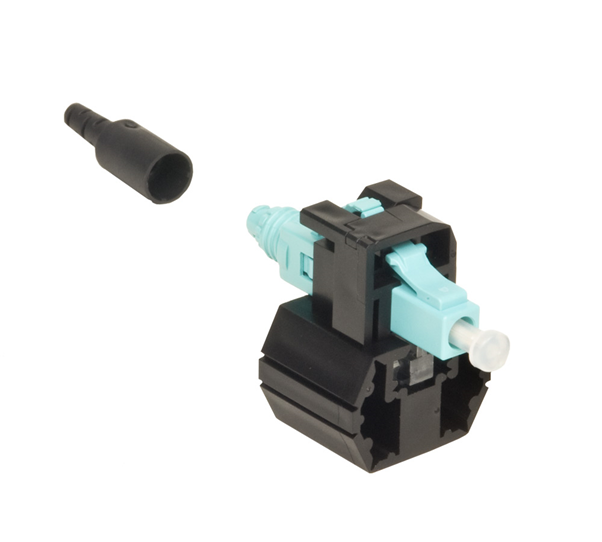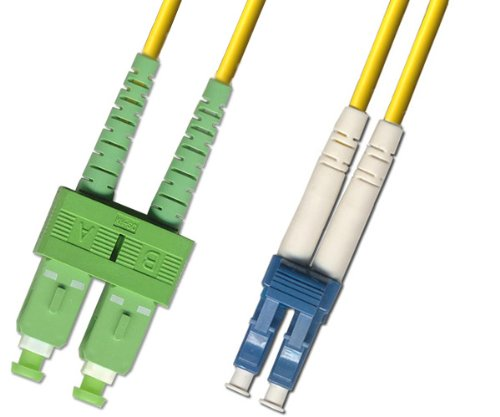Fiber-optic connectors are continuously evolving with the maturity of optical fiber transmission technology. At the same time, the demand for fiber-optic connectivity devices such as the Subscriber Connector (SC) and Lucent Connector (LC) is escalating due to a massive growth in high-bandwidth communication and data services.
But what defines a good fiber-optic connector? What matters the most in the selection of a fiber-optic connector? A detailed account of the SC and LC devices and their comparison will show how fiber connectorization is evolving with new technology advancements and burgeoning applications like data centers and 5G base stations.
Here, it’s worth mentioning that there are more than a dozen fiber-optic connectors; each one of them emerged as a solution to specific product needs and eventually became known for specific technology limitations.
Subsequently, the SC and LC fiber-optic connectors became the most common devices in a broad array of optical fiber connections serving LANs, SANs, WANs, data centers, telecom switching offices, cellular base stations, CATV networks, fiber-to-the-x (FTTX) networks and test and measurement systems. That’s mainly because both SC and LC devices are rugged and offer a moderate cost. And they enable reliable connections that align precisely and are optically very smooth.
The following sections will provide a detailed treatment of these two most popular fiber interface devices and their key design attributes such as interface losses, alignment accuracy, repeatability, on-site terminations, etc. The article will also delve into what’s new in their design anatomy and which one is likely a winner in the long run.
SC connectors: stick and click
SC, abbreviated for Subscriber Connector, has also been referred to as Square Connector or Standard Connector. It’s a popular fiber-optic connector due to its low-cost, durability and simple installation for both point-to-point and passive optical networking.
SC is a push-pull device that uses a ceramic ferrule to deliver highly accurate alignment in a fiber-optic link. It’s a square-shaped connector—also known as “stick and click” for its SC acronym—that comes with a locking tab that enables the push-on and pull-off operation (Figure 1).

Figure 1: The simple, rugged and low-cost SC connectors deliver highly accurate alignment in fiber connections. (Image Source: CommScope)
SC connectors are considered highly suitable for applications that demand high-precision signals and are sensitive to return loss. The FTTX networks and video delivery over RF signals are a case in point.
The new SC connectors further simplify installation, maximize yield and offer guaranteed insertion loss and return loss performance equivalent to the factory-terminated connectors. However, SC has a large connector housing and a 2.5-mm ferrule, and that makes it less suitable for densely populated racks and panels.
This lack of compact design, a crucial factor in the connection real estate for building fiber-optic routing gear, brings us to SC’s younger and smaller cousin, LC, also known as Little Connector.
LC connectors: younger and smaller
Lucent Technologies, now part of Nokia, developed LC connectors in the early 2000s amid complaints that ST and SC connectors were too bulky and easy to dislodge from fiber connections. However, the initial market response to LC connectors was lackluster due to a high license fee.
Eventually, with the availability of LC-compatible transceivers and other active networking components, this smaller version of SC connectors began taking off in new fiber applications such as fiber to the home (FTTH). The smaller form factor, with a 1.25-mm ferrule, was also a huge benefit in high-connection-density environments like data centers and telecom switching centers.
LC is also a push-pull connector, but unlike SC’s locking tab, it employs a latch with a smaller ferrule, and that makes it hugely popular in data communications and other high-density patch applications (Figure 2).

Figure 2: LC, a smaller version of SC, is also referred to as Little Connector due to a more compact form factor. (Image Source: CommScope)
The low-profile push-pull housing in SC connectors maximizes panel density, while the direct push-pull latch ensures efficient insertion and removal. Moreover, the LC connector’s ability to be grouped into a keyed arrangement and locking clip, like RJ45 connectors, has become a major factor in its popularity.
Some LC connectors claim to have no epoxy and no polish, and that makes these connectors faster than devices with typical epoxy terminations. Such LC connectors facilitate quick repairs and terminations in tight spaces and are now being used in high-data-rate systems like 1-Gbit/s to 10-Gbit/s Ethernet and fiber-to-the-desk (FTTD) applications.
Some other designs offer curing fixture and pre-assembly of LC connector ferrules prior to polishing, which improves throughput and eliminates accidental fiber breaks. The new designs also feature the simultaneous rotation of both ferrules to ensure that bare fibers are not being exposed at any time during polarity reversal.
A comparison of SC and LC devices
For starters, both SC and LC connectors offer nearly the same insertion loss and return loss, the two primary parameters for optical fiber connectors as well as copper cable connectors. And both connector types offer repeatability features.
Next, the majority of SC and LC connectors minimally conform to the TIA/EIA 568B.3 standard, which specifies a maximum insertion loss of 0.75 dB for both single-mode and multi-mode fiber links. Likewise, the minimal return loss is ≥26 dB for single-mode fiber and ≥20 dB for multi-mode fiber.
What’s most startling in the comparison between SC and LC connectors (Figure 3) is the fact that LC devices feature a 50-percent-smaller footprint due to their compact ferrule and connector housing. That’s crucial because connection density is becoming a major selection criterion in next-generation IT applications like data centers.

Figure 3: The fundamental difference between LC and SC fiber-optic connectors lies in size and connection handling. SC is a push-pull connector, while LC employs a latch as opposed to SC’s locking tab. (Image Source: 3M)
When it comes to cost comparison, SC connectors can be manufactured at a lower price, so they cost less than LC connectors. But LC connectors are expected to dominate this segment primarily due to density advantage, and here, the economy of scale could eventually narrow the cost gap between SC and LC devices.
LC’s combination of small size and latch feature allows engineers to fit more interfaces on line cards and panels in applications where packing density—aka the number of connections per area—is critical. It also provides additional leverage for routing fiber lines in tight spaces and labeling them with proper identification.
Conclusion
Fiber-optic communication is expected to grow significantly while it expands its reach into new areas such as health care, railways, defense, aerospace and oil and gas exploration. Here, the choice of the connector is vital in ensuring that the connection is highly precise to minimize losses and that electromagnetic interference (EMI) and RF interference are contained from spreading into front panels and enclosures.
The selection of fiber-optic connector is also vital regarding the cost and deployment speed of fiber communication networks. As explained in this article, SC and LC devices have become the primary choice of connectivity for most or all of the fiber-optic distribution.
Furthermore, LC devices have momentum on their side due to miniaturization. However, in the end, the choice comes down to specific application requirements. And it’s most likely going to be either the SC connector or LC connector.

